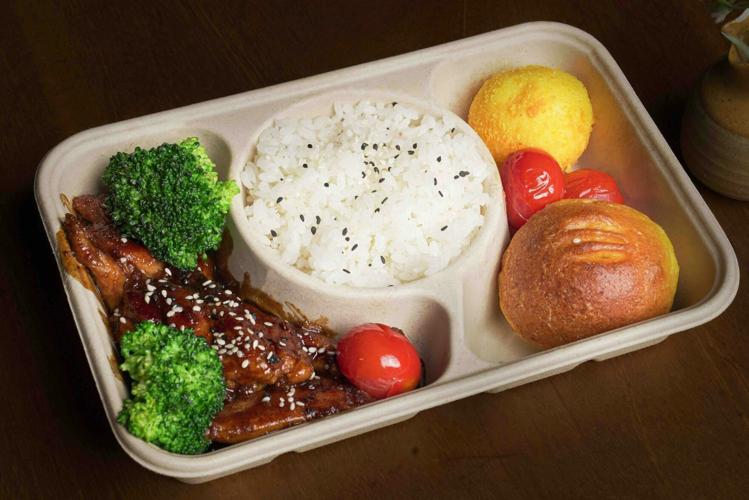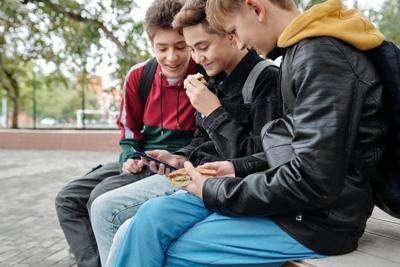
Batkhuyag Enkhtuvshin
Spaghetti tacos, peanut butter and pickle sandwiches, and even beer — a new survey has found the wildest lunch requests kids make from their parents, and the lunchtime priorities parents insist on.
The poll of 2,000 U.S. parents of school-aged children found many kids have asked their parents for strange additions to their packed lunches, from a cold baked potato, raw beets and crab legs, to ketchup and cucumbers, and even a Salisbury steak.
And parents recalled having to say no to many lunch requests: beer, candy, ice cream, wings, sushi, steak, soda and seafood boils.
More classic, obvious picks kids said they "love" to eat for lunch were: pizza (93%), chips (93%), cookies (93%) and fruit snacks (93%). And some not-so-obvious but healthier options were: fresh fruit (92%), cheese sticks (86%), yogurt pouches (76%) and yogurt drinks (73%).

Commissioned by Chobani and conducted by Talker Research, the study found 78% of parents send their kids to school with a packed lunch, but nine in 10 kids come home from school with leftovers, causing many parents to ask how they can up their lunch-packing game.
Seventy-six percent of parents have talked to their kids about why they bring home certain foods untouched. According to them, they're either picky eaters (39%), want more snacks and less main dishes (25%) or they would rather eat what the school offers (19%).
Kids and parents also differed on what they believe consists of a "good," balanced lunch. Kids said a good lunch includes a main and snack (50%), something sweet (44%), juice (40%) and water (33%).
Parents, on the other hand, insist a good, healthy lunch needs to include a main and snack (53%), water (51%), juice (42%) and something nutrient-dense (39%).
"Kids always want the things that taste good to them," said Frances Largeman-Roth, RDN and mom of four. "Parents, meanwhile, want what's healthiest for them. But in a lot of cases, those two things aren't mutually exclusive."
The survey found many parents will go out of their way to motivate their kids to eat their full lunch.
More than half (51%) try to pack food kids like to eat. Meanwhile, other motivations include seeing friends eating the same thing (29%) or being rewarded for eating all of their lunch (19%).
A majority of parents (85%) would likely plan their kid’s lunches with them, as long as their kid promises to eat everything that's planned for them.
Three in four (74%) parents said they "frequently" seek out their child's approval on what gets packed for lunch.
When making their kid's lunch, 41% said they prioritize child-approved foods, while 37% prioritize nutrient-dense foods. Nearly a fifth (19%) prioritize speed and convenience.
"Ultimately, parents want the same thing for their kids: to be healthy and well-fed," continued Largeman-Roth. "What's interesting about this study is how different parents are taking different approaches to achieve the same goal with their kids. Something nutrient-dense that still gets that kid stamp of approval, like yogurt, can help satisfy the wants of kids and needs of parents.”
WHAT PARENTS AND KIDS SAY IS NEEDED FOR A "GOOD LUNCH"
According to parents:
- A "main" and a "snack" - 53%
- Water - 51%
- Juice - 42%
- Something nutrient-dense - 39%
- Milk - 35%
- A source of high, animal-based protein - 34%
According to kids:
- A "main" and a "snack" - 50%
- Something sweet - 44%
- Juice - 40%
- Water - 33%
- Milk - 25%
- Something savory - 23%
Survey methodology:
Talker Research surveyed 2,000 American parents of school-aged children; the survey was commissioned by Chobani and administered and conducted online by Talker Research between May 8 and May 15, 2025.
We are sourcing from a non-probability frame and the two main sources we use are:
- Traditional online access panels — where respondents opt-in to take part in online market research for an incentive
- Programmatic — where respondents are online and are given the option to take part in a survey to receive a virtual incentive usually related to the online activity they are engaging in
Those who did not fit the specified sample were terminated from the survey. As the survey is fielded, dynamic online sampling is used, adjusting targeting to achieve the quotas specified as part of the sampling plan.
Regardless of which sources a respondent came from, they were directed to an Online Survey, where the survey was conducted in English; a link to the questionnaire can be shared upon request. Respondents were awarded points for completing the survey. These points have a small cash-equivalent monetary value.
Cells are only reported on for analysis if they have a minimum of 80 respondents, and statistical significance is calculated at the 95% level. Data is not weighted, but quotas and other parameters are put in place to reach the desired sample.
Interviews are excluded from the final analysis if they failed quality-checking measures. This includes:
- Speeders: Respondents who complete the survey in a time that is quicker than one-third of the median length of interview are disqualified as speeders
- Open ends: All verbatim responses (full open-ended questions as well as other please specify options) are checked for inappropriate or irrelevant text
- Bots: Captcha is enabled on surveys, which allows the research team to identify and disqualify bots
- Duplicates: Survey software has “deduping” based on digital fingerprinting, which ensures nobody is allowed to take the survey more than once
It is worth noting that this survey was only available to individuals with internet access, and the results may not be generalizable to those without internet access.













